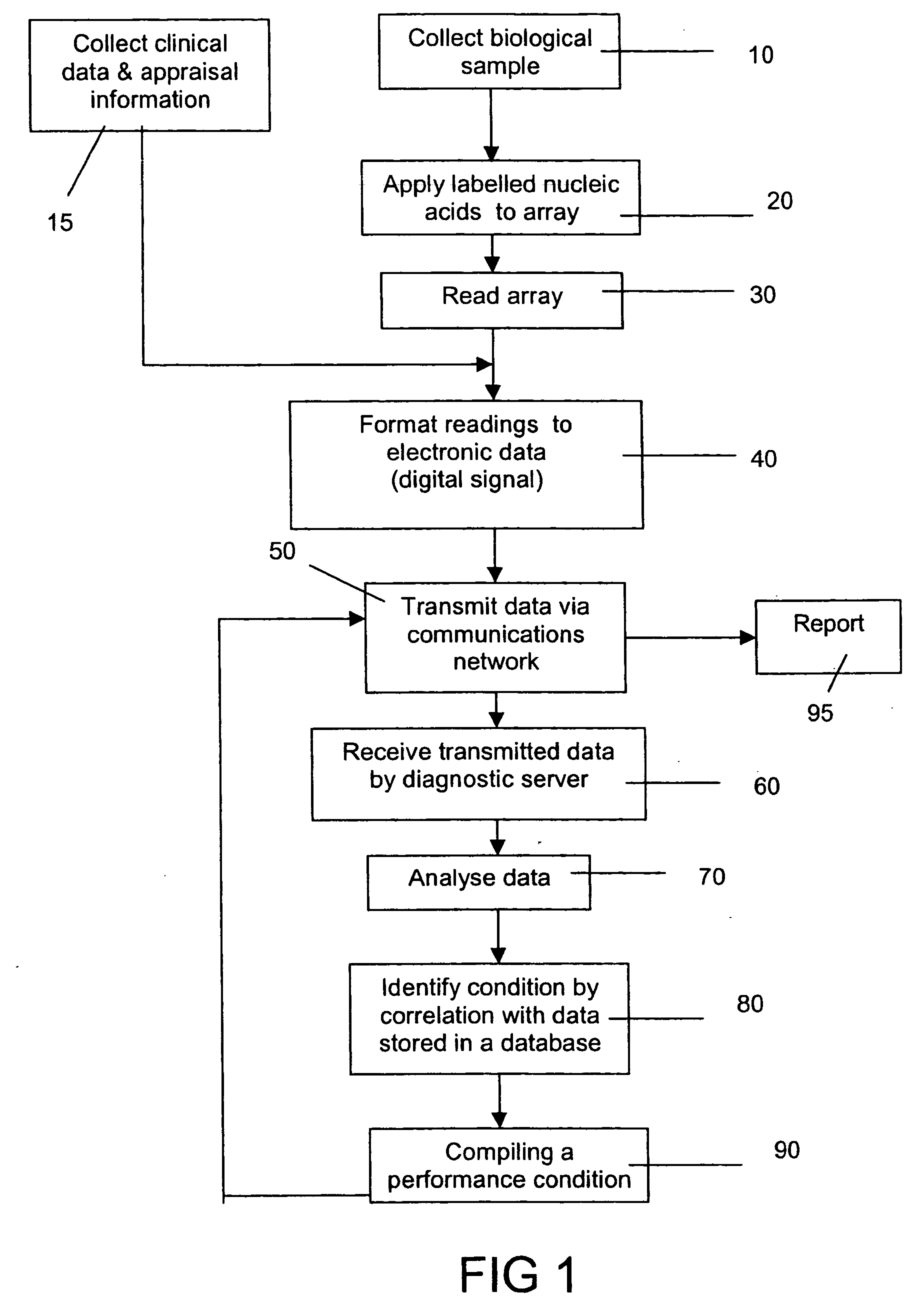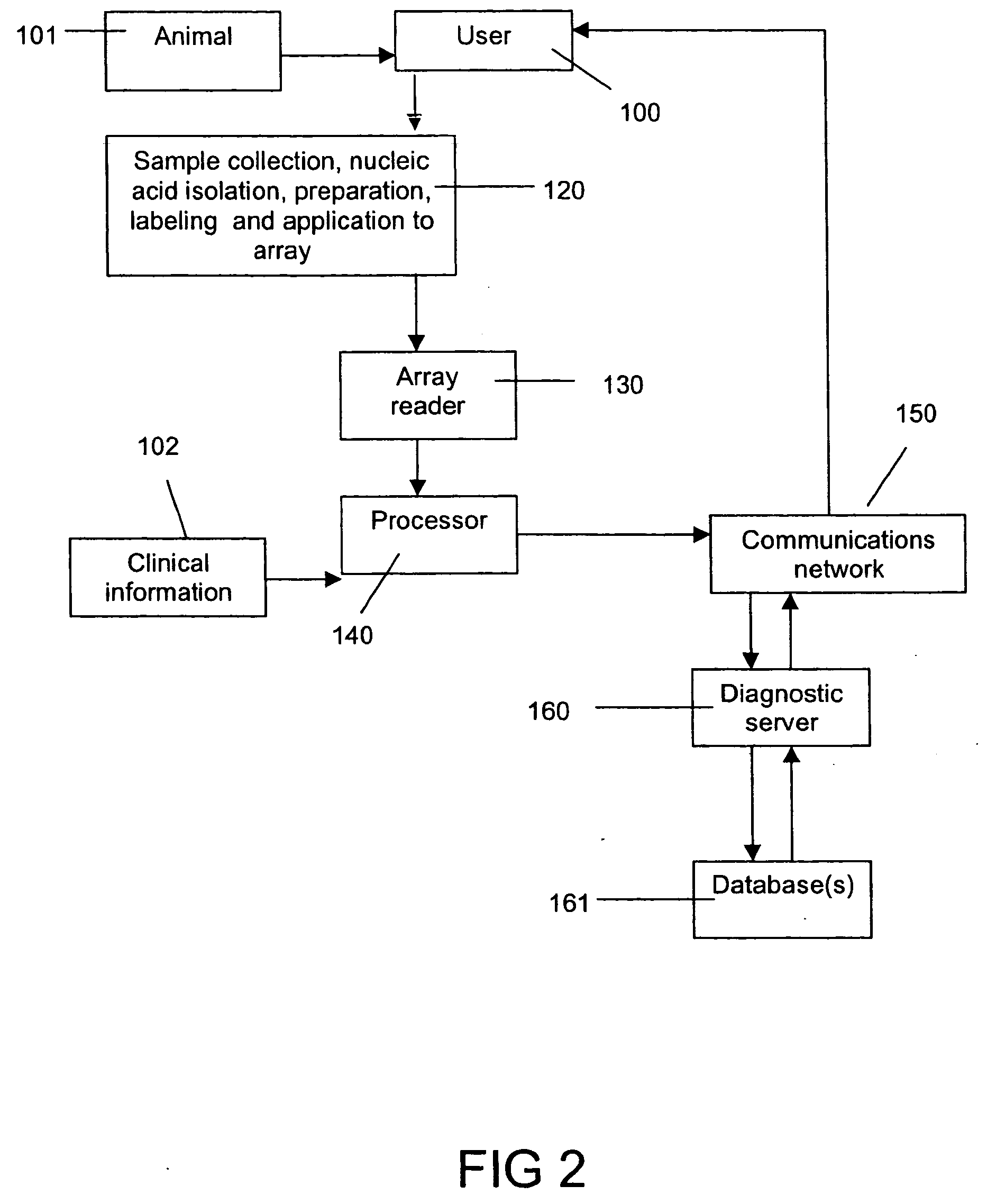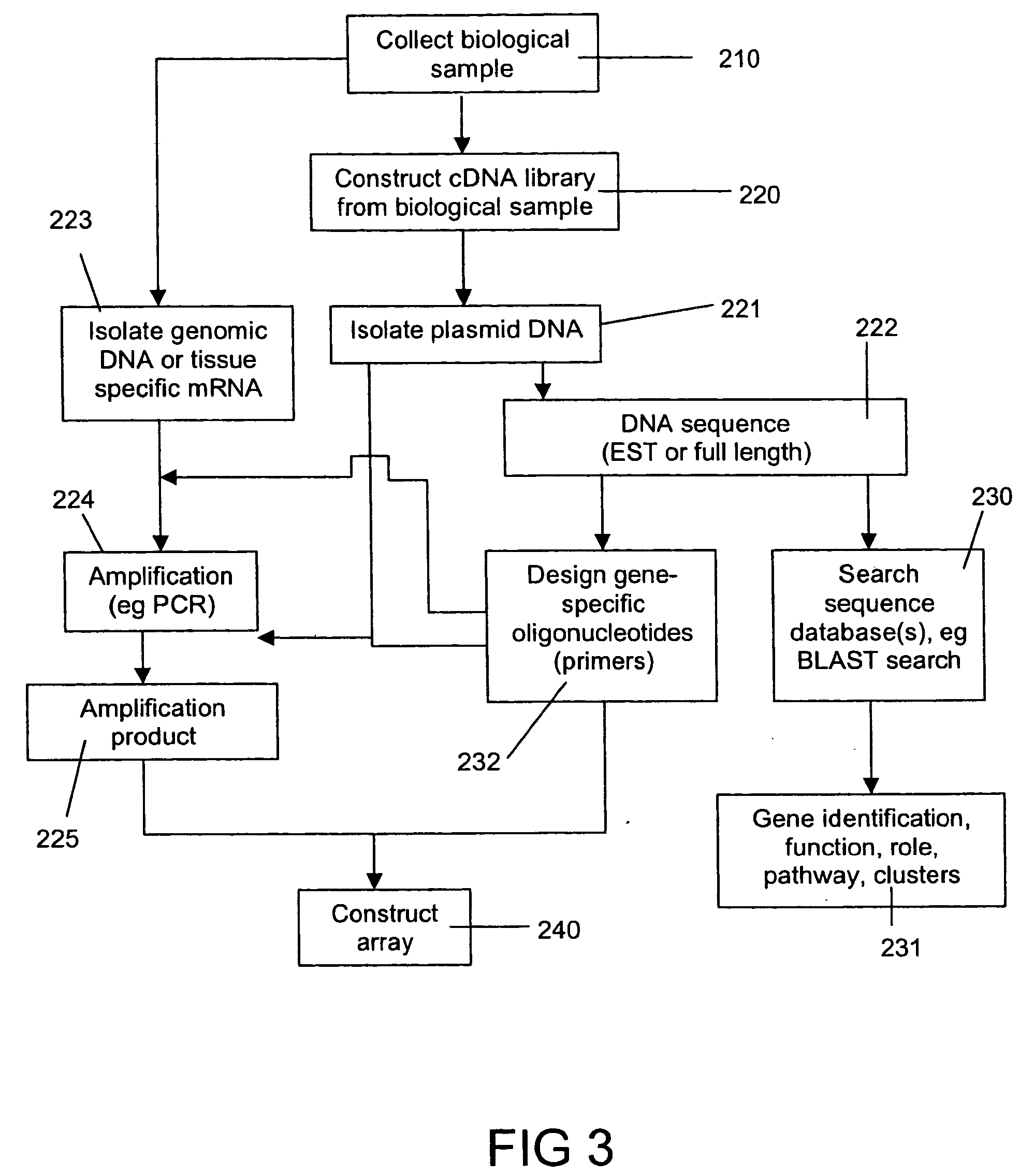Diagnostic method for assessing a condition of a performance animal
a diagnostic method and performance animal technology, applied in the field of diagnostic methods for assessing the condition of performance animals, can solve the problems of poor correlation between test results and conditions of animals, limited value of tests, and rarely suitable for determining the level of performance of animals, etc., to achieve the effect of reducing the risk of infection
- Summary
- Abstract
- Description
- Claims
- Application Information
AI Technical Summary
Benefits of technology
Problems solved by technology
Method used
Image
Examples
Embodiment Construction
[0055]FIG. 1 is a flow diagram of one embodiment of the invention showing steps for assessing a biological sample for diagnosing or assessing a condition of an animal. A user collects a biological sample 10, for example a blood sample from a horse. At the same time, clinical data and appraisal information is collected in a standard format 15, for example by filling in a form. The biological sample 10 is processed so that nucleic acids contained therein are detectable when hybridised with a complementary nucleic acid located on an array 20. The nucleic acid may be detectable by a label incorporated therein. Preferably, the array 20 is a microarray which is read 30 by standard methods and equipment common to the art to identify and measure relative abundance of those nucleic acids from the biological sample which have bound to the microarray 20 (inclusion of a reference sample run in parallel allows for the calculation of the relative abundance of target nucleic acids). Data from the ...
PUM
| Property | Measurement | Unit |
|---|---|---|
| volume | aaaaa | aaaaa |
| wet weight | aaaaa | aaaaa |
| volume | aaaaa | aaaaa |
Abstract
Description
Claims
Application Information
 Login to View More
Login to View More - R&D
- Intellectual Property
- Life Sciences
- Materials
- Tech Scout
- Unparalleled Data Quality
- Higher Quality Content
- 60% Fewer Hallucinations
Browse by: Latest US Patents, China's latest patents, Technical Efficacy Thesaurus, Application Domain, Technology Topic, Popular Technical Reports.
© 2025 PatSnap. All rights reserved.Legal|Privacy policy|Modern Slavery Act Transparency Statement|Sitemap|About US| Contact US: help@patsnap.com



